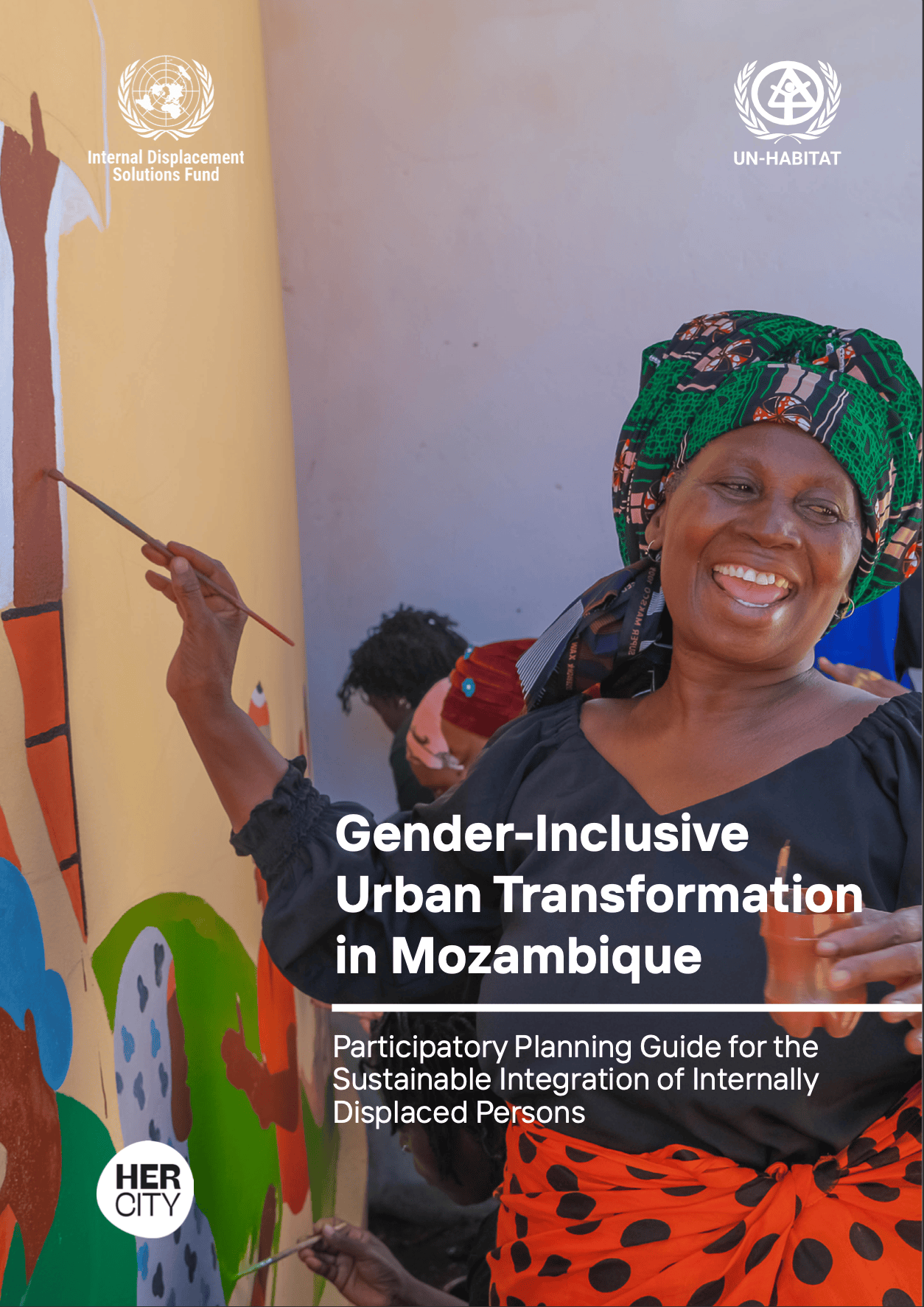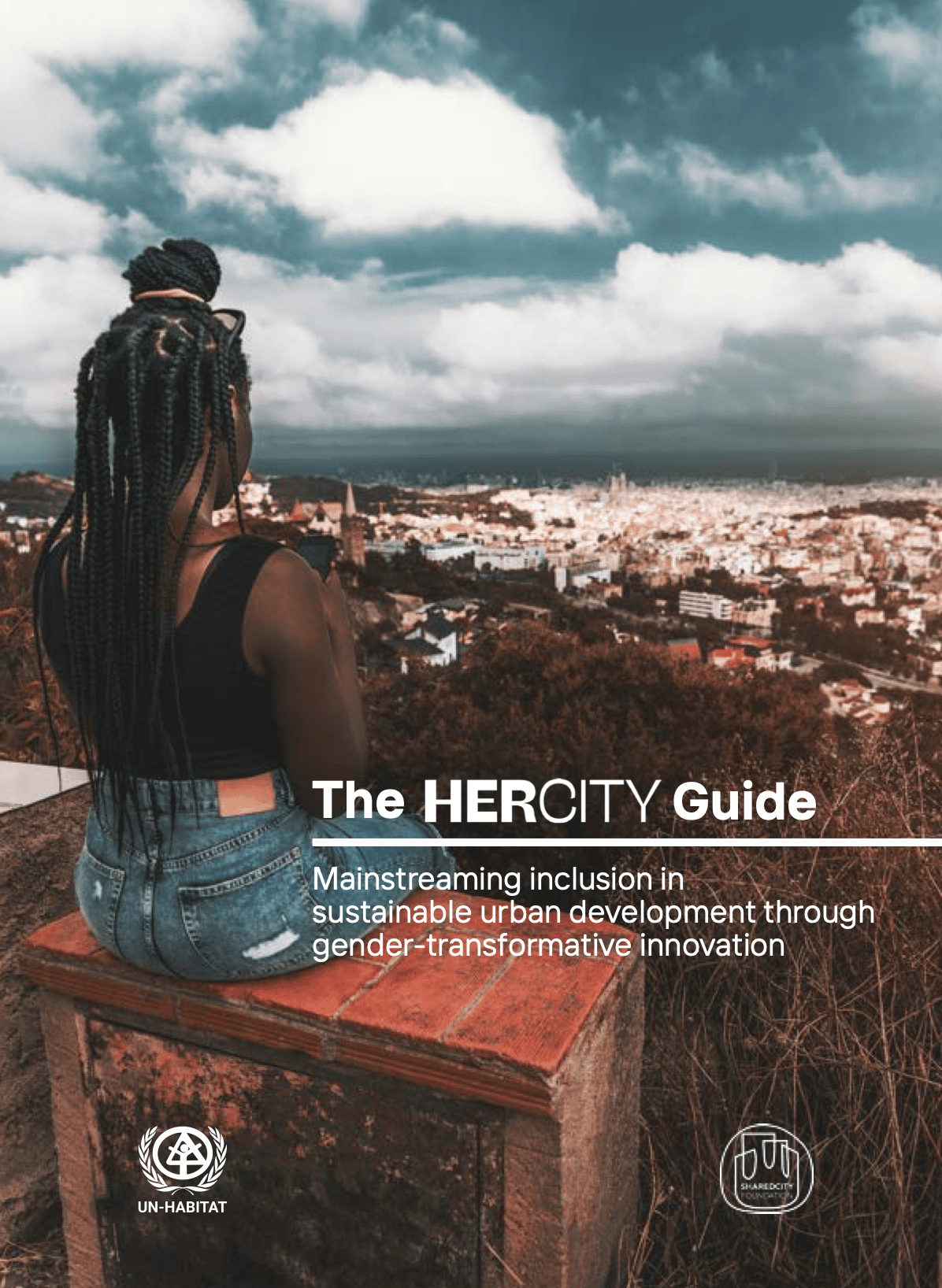About Her City
The tables are turned
If we let citizens that are rarely heard be the experts, our cities and communities will become more inclusive, equal and sustainable. For example, involving girls in urban development will make the city better for everyone, because they plan and design with diversity and different needs in mind. Participatory processes are key for planning a city that works for everyone, and Her City brings these methods and tools to urban actors and cities globally. We support cities to mainstream inclusion in urban development as a part of their long-term strategies to build sustainable cities and societies.

New publications!
Her City Mozambique Crisis edition
Her City Ukrainian edition
Her City Guide
Her City Digital platform
The new version of the Her City Toolbox brings together a comprehensive framework for inclusive and participatory urban development. Building on the success of the original toolbox, we have integrated other existing methodologies that enhance participatory urban development in a wider range of contexts. The updated guide includes a wider range of guidance and tools for monitoring and evaluation; planning across urban scales; construction, management and maintenance; policy-making, mainstreaming strategies, and scaling; and inclusive urban development for humanitarian and emergency situations.

Together with experts and stakeholders in urban development, we have created a toolbox with a cost-efficient process to be incorporated within cities and communities. The toolbox follows a unique process containing 10 building blocks as a digital guideline on how to co-plan cities from a girl’s perspective. The 10 blocks represent the three phases of the urban development process. They will guide you through the project setup phase (Block 0), the assessment phase (block 1-3), the design phase (block 4-6), the implementation phase (block 7-9), and the follow-up phase (block 10). Each block contains a number of activities with detailed steps to follow in order to deliver on your Her City project. Tools such as checklists, calendars, agendas, manuals, forms, boards, apps, templates, surveys and visualisation services will help you on the way to reach the expected results.

Her City provides an opportunity to build capacity on a larger scale, as it equips municipal professionals, urban actors and local decision-makers with a solid toolbox for mainstreaming youth, gender and socioeconomic perspectives by strategically involving girls and young women in urban planning and design.
Her City’s ambition is to contribute to a range of the 2030 Agenda Sustainable Development Goals (SDGs): SDG3 on health and well-being, SDG5 on gender equality, SDG10 on reducing inequality, SDG11 on sustainable cities and communities, SDG16 on peace, justice and strong institutions and SDG17 on partnerships. However, previous projects have shown that this approach also contributes to implementing other SDGs on the local level.

Her City is a joint urban development initiative by UN-Habitat (the United Nations Human Settlements Programme) and the Shared City Foundation. It is the result of the pilot project ‘Urban Girls Movement’ launched in 2017 funded by the Swedish International Development Cooperation Agency (Sida) and the Swedish Innovation Agency (Vinnova). It mapped and developed methods and tools for increased equality and inclusion in urban development. The ambition was to highlight the values of increasingly involving women and girls in planning and design processes. The Her City Toolbox was developed in close collaboration with a range of multi- stakeholders from public sector, private sector, research, civil society and citizens, and partners such as the Block by Block Foundation (Minecraft, Mojang and Microsoft), White Architects, the Swedish Union of Tenants, and MethodKit.

So why Her City? Because people increasingly live in cities. Cities that already today account for 70% of CO2 emissions. By 2050, 70% of the world’s population is expected to live in urban areas. This brings enormous challenges, not least in terms of inequality. Unplanned urbanisation is followed by widened gaps between the city and rural areas, urban centres and outskirts, and between different groups in society. A billion people live in informal urban settlements, and due to rapid and unplanned urbanisation disadvantaged urban dwellers will drastically increase.
Among the most vulnerable are young women in socio-economically disadvantaged areas. Research shows that girls and women do not use a city’s public spaces to the same extent as boys or men. From the age of eight, 80 per cent of the public spaces can be dominated by boys, and girls express that they feel significantly more insecure and excluded.
There is a lack of knowledge in participatory urban planning and design, particularly in involving vulnerable groups in urban development processes. Research has shown that participatory urban development with girls and young women, local actors, as well as multi-level decision-makers, creates opportunities for more inclusive, equal and sustainable urban development.

Our resources:
Her City Digital platform
Her City Guide
Her City Stories of change
Training package:
Her City Brochure
Her City Tutorial
Her City Online training
Projects:
Her City Project map
Her City Impact stories
Her City Participants’ testimonies
Social media:
Instagram
YouTube
Her City library
Tailored toolkits:
Her City Mozambique Crisis edition
Her City Ukrainian edition
Contact our team via this form.
Our terms and conditions here.